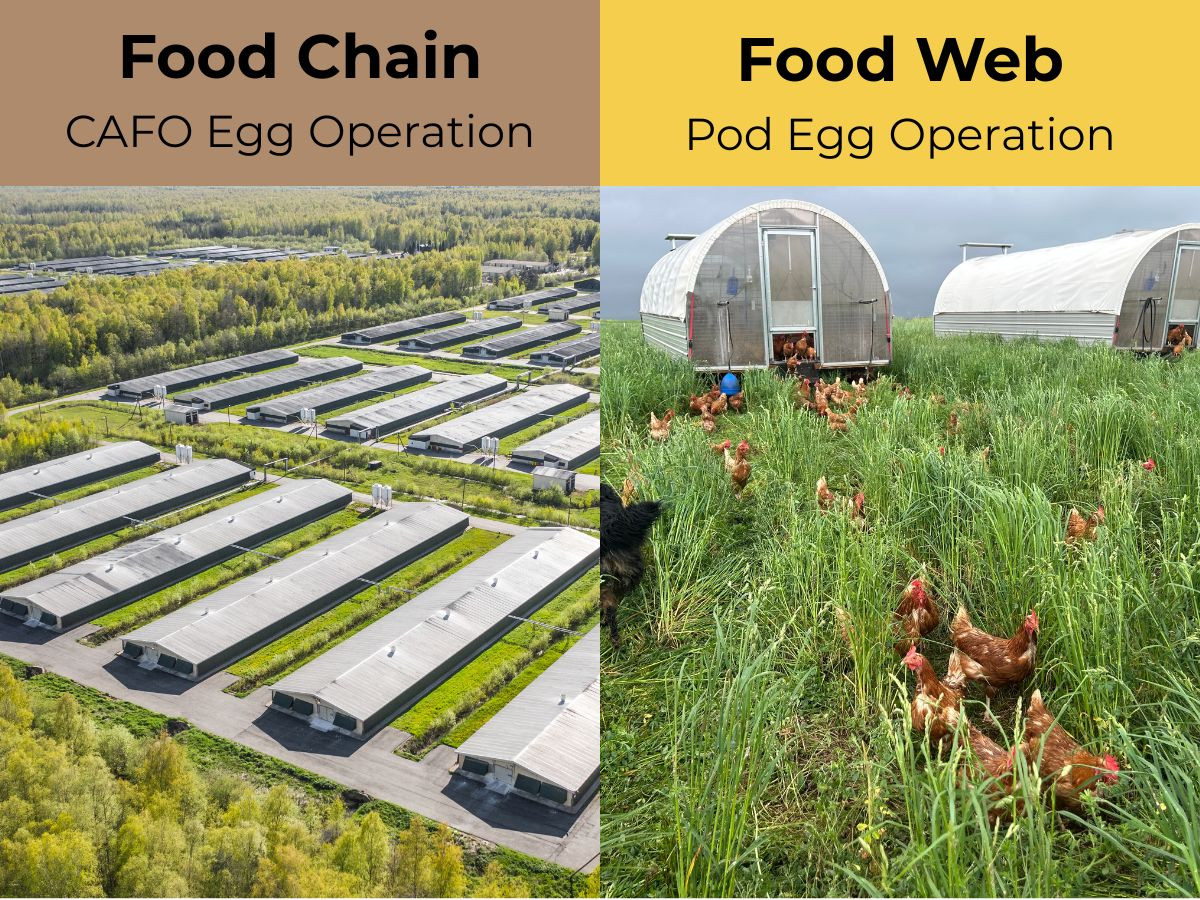Tips on how to thaw, prep, and cook your pastured Thanksgiving turkey.
posted on
November 13, 2024

So, you have a beautiful PASTURE-RAISED CORN & SOY FREE TURKEY in your freezer. Now what? Here are some tips for thawing, prepping, and cooking your whole Thanksgiving turkey.
When do I need to thaw my turkey?
This is very important. There's nothing worse than getting ready to cook your turkey just to realize that it's still frozen!
When you need to thaw your turkey will depend on how big your turkey is and which thawing method you choose. Here are the details:
Slow thaw in the refrigerator. You’ll need about 24 hours per 4-5 pounds of turkey. So, for a 11-13lb bird, plan for 2-3 days in the fridge to thaw.
Quick thaw in cold water. Put the turkey in a sink of cold water. Change the water every 30 minutes, and plan for about 30 minutes per pound. So, for a 11-13lb bird, plan for a 5-7 hour thaw time.
TIP: Always keep a turkey cold when thawing. Once your turkey is thawed, it will last 1-2 days in the fridge. Timing is everything!
To brine or not to brine?
Whether or not to brine your turkey is a personal choice. If you choose to slow roast (more details on that below), the meat will be nice and tender, brine or no brine. If you choose a regular roast, then a brine will add some extra tenderness and extra juiciness and is recommended.
There are two main types of brining. Here are instructions for both:
Wet brine a turkey. For a super juicy bird.
Mix salt and water together until dissolved in a bowl or pot big enough for the turkey. The weight of the salt should be 5% of the total weight of the solution. That’s 1-¼ oz of salt per quart of water.
Infuse it with spices if you’d like. Think bay leaves, peppercorn, anise, rosemary, garlic, orange zest, chilis, brown sugar, molasses, etc. Add the ingredients of your choosing to the salt water solution, heat to a boil, and then cool.
Add the turkey to the brine. Keep it cold and let it soak for 8-18 hours. Then, remove from the brine, rinse with cold water, pat dry, and then cook.
Dry brine a turkey. For a tender bird with crispy skin. Easier than a wet brine.
Start with a thawed or partially thawed bird. Pat dry and rub generously with salt. If you want to infuse some extra flavor, consider mixing some herbs and spices with the salt.
Refrigerate uncovered (or loosely covered) for 1 hour per pound. So, for a 12 pound bird, plan for 12 hours in the fridge.
No need to rinse. The salt should dissolve while the brining magic happens.
Should I stuff my turkey?
Stuffing a turkey is optional. However, serving stuffing with your turkey is definitely recommended!
A word of warning. To cook stuffing inside the bird to the right temperature, you may end up with overcooked meat. This is why I prefer to make the stuffing separately. On the other hand, the flavor you get with stuffing cooked in a turkey is exceptional. A tough Thanksgiving choice for sure!
Instead of stuffing with stuffing, consider adding a little flavor here by stuffing your turkey with chopped onions, garlic, celery, apples, oranges, or lemons.
What should I season my turkey with? How do I prep it for cooking?
For golden brown, crispy skin, I recommend coating your turkey with fat first.
Use about ½ cup of butter, ghee, sunflower oil, or your favorite cooking fat. Rub or brush it all over the outside of the bird. Be generous!
Then, for added flavor, I recommend seasoning your bird inside and out before cooking.
If you did NOT brine the turkey, rub salt, herbs, and spices of your choosing all over the outside and interior cavity.
If you brined the turkey, no salt is needed at this point. Just rub in herbs and spices.
Traditional herbs and spices that go great with Thanksgiving turkey are parsley, thyme, rosemary, onion powder, garlic powder, and paprika. Or, put a tropical twist on your bird with some lime zest, cumin, and coriander!
Then, you can truss the turkey. This is optional but does encourage even cooking.
Tuck the wing tips behind the bird’s shoulders. Tie the ankle together with kitchen twine of unflavored dental floss.
Will I do a regular roast or slow roast?
There are many ways to cook a turkey. Miller's recommends a low and slow cooking method. This will give the juiciest bird with the most collagen broken down into health-enhancing collagen. No matter whether you choose a slow or regular roast, the instructions are the same for cooking:
Let it rest. Always let your turkey rest at room temperature for about an hour before cooking. While it’s resting, preheat your oven to 350F.
Put it in the oven. Place turkey breast side up in a roasting rack. Loosely cover with a lid or aluminum foil.
Halfway through baking, remove the lid/foil. This will make for crispy skin.
Baste every 30-60 minutes (optional). Don’t let those pan drippings go to waste!
Slow Roasting Cooking Temp & Times: Preheat the oven to 350F. Turn down the heat to 250F when the turkey goes in the oven. Cook at 250F for 30-45 minutes per pound. So, a 12lb bird would take 6 hours to cook.
Regular Roasting Cooking Temp & Times: Preheat the oven to 350F. Cook at 350F for 13 minutes per pound. So, a 12lb bird would take 2.5-3 hours to cook.
You know your turkey is done when a thermometer reads 165F in the thickest part of the bird.
When should I put my turkey in the oven?
Timing is everything! I mean, the worst case Thanksgiving scenario is that everything is ready for dinner, but the turkey still is not cooked. Here's how to know when to put your turkey in:
- Decide what time you want to eat.
- Find out the weight of your bird.
- Choose whether you'll do a slow or regular roast.
- Calculate how much time will be needed using the "Cooking Temp & Times" guidelines above. Add an extra 30-60 minutes just to be safe.
- Subtract the time needed from the time you want to eat. Then, you'll know when to put the turkey in the oven!
Enjoy your Thanksgiving turkey!
Are you ready for Thanksgiving? What are your favorite Thanksgiving tradition(s) or dish(es)?
I’d love to hear from you. Join the conversation below (no account requireed) or contact us.




